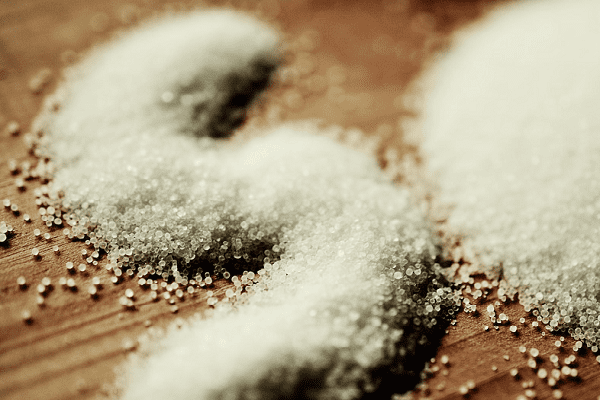Healing diets >>>> Diet with the deposition of calcium salts in the body
Diet with the deposition of calcium salts in the body.

A common thing is a pathology, as a result of which the processes of calcium assimilation are disrupted, and after them an insufficient amount of calcium-phosphorus compounds for the renewal of bone tissue, the basis of which is calcium phosphates. But there is another kind of pathology, when calcium is retained in the body and creates a depot in the form of salt deposits that change the structure of tissues and disrupt the functioning of organs formed by the affected tissues. This process is called calcification, and it is no less dangerous than hypocalcemia (insufficient absorption of calcium).
Calcium-phosphorus metabolism is a rather complex process regulated by the endocrine system (or rather hormones of the thyroid and parathyroid glands, sex hormones). In addition, calcium - phosphorus metabolism depends on the work of gastrointestinal enzymes (in particular, the acidity of gastric juice and the ability to absorb calcium salts (phosphates and oxalates) throughout the gastrointestinal tract. And that's not all, since the regulation of the amount of calcium compounds is influenced by flawless work the urinary system, which is responsible for the reabsorption of calcium in the tissues of the body.
The body needs calcium in the form of calcium phosphates - salts that are important for bone tissue. Calcium is contained in the form of insoluble compounds in food: phosphates and oxalates, which cannot be easily absorbed by the body, acids (gastric juice), lactose, vitamin D are needed for these purposes. Passing successful utilization in the digestive tract (where stable calcium salts are dissolved) calcium, however, can still form stable insoluble compounds in the body itself.
How do calcium compounds go outside the circulatory system, bone structures, and the excretory system?

In addition to its direct functions for the renewal of bone tissue, calcium plays the role of an intermediary in processes that are much more complex and associated with the functioning of cells, their differentiation, and intercellular metabolic processes. In other words, calcium ions all the time run through the body, then into the cell, then outside of it. And a stable percentage of calcium ions ensures its excretion by the urinary system.
Getting from the bloodstream in a certain percentage into the cellular structures of various organs, calcium has the ability to leave the cell membrane into the extracellular environment, and if the processes of excretion of calcium compounds are disturbed, it remains in the tissues, in the interstitial space, where it accumulates in the form of crystalline compounds and changes the quality of connective, muscle and parenchymal tissue, blocking its functionality. For example, connective tissue and muscle fibers interspersed with salt deposits become less elastic.
The accumulation of crystals of calcium salts in the parenchyma of organs gives it an ossified appearance, which accordingly disrupts all functional processes in a particular affected organ. Damage to the tissues of the vascular wall by crystalline deposits, blocks blood flow and creates the prerequisites for the destruction of all nutritional functions of the blood. The release of crystals of calcium salts into the intercellular fluid, as well as its accumulation in the synovial fluid, contributes to disorders of the musculoskeletal system. This is why calcification is considered a very dangerous condition. If the body cannot cope with the excretion of calcium salts, it is necessary to reduce their intake into the body, and this requires adherence to a certain diet.

Nutrition during the deposition of calcium salts (phosphates and oxalates) is based on exclusion from food or a significant reduction in the consumption of foods containing these compounds. A feature of calcium - phosphorus metabolism disorders is the fact that such violations are accompanied by violations of fluid excretion from the body, which is very important while maintaining the calcium balance. For this reason, along with limiting the intake of calcium and phosphorus in food, the daily intake of sodium chlorine - table salt - which usually accompanies almost all dishes and is part of most food products, is also reduced.
Traditional sources of calcium-phosphorus compounds in the body are dairy products, legumes, animal fats, fatty fish and seafood. The same compounds are found in sufficient quantities in green crops: broccoli, leafy salads, salad types of cabbage, in cereals, in many berries and fruits. Having learned to replace foods rich in calcium and its compounds with foods depleted in these compounds, one can achieve a significant decrease in the amount of undigested calcium, and against the background of simultaneous therapeutic measures to neutralize these compounds and normalize their excretion from the body, improve the state of tissue structures and their functions.

Rule number one in the diet with salt deposits is the correct intake of fluids, but not juices and smoothies, but ordinary drinking water without mineral additives. Instead of the usual juices, it is better to use diuretic fruit drinks and diuretic herbal teas, consume a lot of organic water: watermelons, cucumbers, melons and other juicy fruits and vegetables.
It has been observed that coffee and teas (especially leaf teas) can also contribute to the deposition of calcium salts in tissues, since they are considered a source of oxalates.
It complicates the excretion of calcium from the body by impaired urinary functions of the kidneys, and protein in food loads the work of the kidneys. A protein-free diet is harmful in principle, since protein is the main structural component of the body and cannot be ignored. But meat dishes with a high protein content are replaced with low-protein foods: eggs, walnuts, peanuts, pine nuts, cashews, boiled root vegetables (beets, carrots, turnips, celery). The diet uses lean meats and fish that are cooked with minimal or no salt.
High-fiber foods interfere with the absorption of calcium, so whole grain breads, bran baked goods, rye and peeled flour baked goods should be present in the diet with salt deposits and become a substitute for products made from white bakery flour.
As a side dish for salt deposits, cereals (buckwheat, corn, millet, oat, rice, pearl barley), pasta of durum wheat, potatoes, Jerusalem artichoke are suitable.
From vegetables, you can include eggplants, zucchini, tomatoes, asparagus, pumpkin in your diet. Fruits avocado, pineapple, pear, sweet apples contain a minimum amount of calcium, and will be safe for the diet.
What is harmful to eat with salt deposition:
- Calcium phosphates (E341, E542) and calcium carbonates (E170) as food additives are contained in finished food products as technological ingredients - significantly increase the content of calcium compounds in the body.
- Oxalates (salts of oxalic acid) are found in greens, in sour fruits, berries and vegetables, in chocolate, in cocoa, in black pepper, in legumes - they form insoluble compounds with calcium and are deposited in the parenchyma of organs in the form of stones.
- An excess of salt (NaCl) is contained in canned foods, semi-finished products, mineral water, smoked meats, cheeses and feta cheese, in ready-made meals - it inhibits the excretion of excess calcium from the body.

Read

Read


























